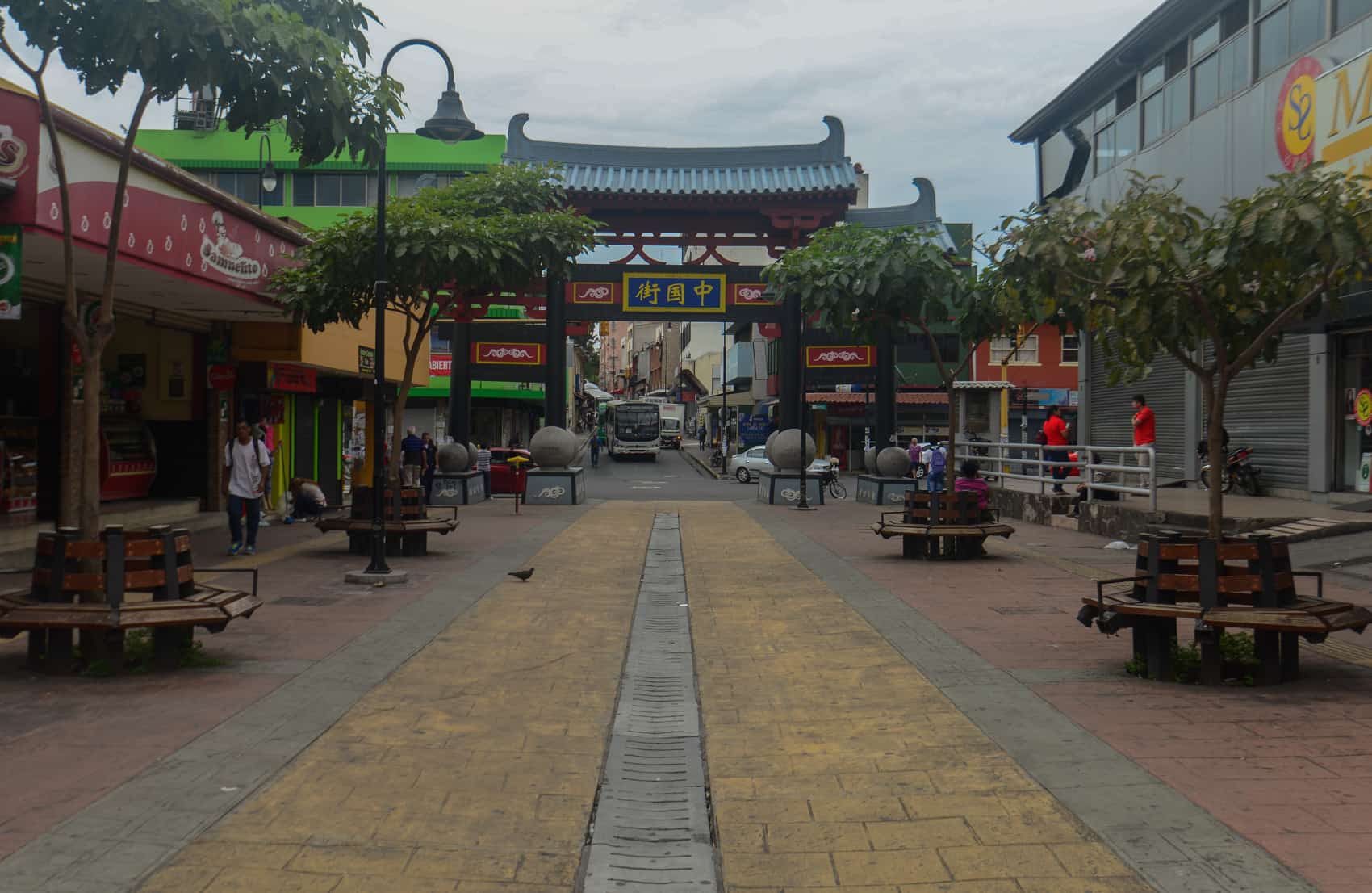Costa Rica’s most intense rainy-season months are bringing more problems to National Liberation Party (PLN) presidential candidate Johnny Araya’s pet project as mayor, San José’s Chinatown, known as Barrio Chino.
Several floods in recent weeks have swamped many businesses along the Barrio’s main boulevard, and the city’s old sewage system has been unable to handle the excessive water.
Stephanie Mendoza, manager at Paso Canoas, said the store has flooded at least five or six times in the past few weeks.
“We wanted to increase the width of drain grates in front of our store so that rainfall could drain better, but municipal officials wouldn’t authorize us to do that, saying they [the drain grates] are public property, and that we could be fined for altering them,” Mendoza said.
“We were forced to move all of our merchandise that was at ground level. Some of our metal shelves are now rusting, and others made of wood are becoming moldy,” she added.
Passage on most of the seven blocks of Chinatown’s main boulevard was closed for several hours during a strong rain shower on Sep. 16, and local employees were up to their waists in water. Store employees struggled to keep up with the rising water by using brooms in a losing battle to keep merchandise dry.
“The situation worsens when motorists pass at certain speeds and send waves of standing water into the stores on both sides [of the boulevard],” Mendoza said.
Litter to blame, city official says
During a recent renovation, workers replaced the sewers along the old 9th Street with one central sewer system that is covered with a layer of porous concrete that functions as a filter.
Rodolfo Sancho, director of the city’s Public Works Department, said the filtering system was the first of its kind in Costa Rica and was working as expected, but “excessive pollution, mainly litter thrown by pedestrians, and oil and grease from vehicles and nearby businesses have saturated the cement layer and reduced its absorption capacity. … And heavy rains like those we have seen in recent days definitely aggravated the problem.”
He said that the recent flooding along the boulevard was not related to the construction of Barrio Chino, “but rather was due to a sewage system that is over 100 years old.”
However, the municipality now will be forced to fix the problems with the city’s drainage system to hopefully stop the flooding of local businesses.
City officials already have increased the number of workers to clear Chinatown of debris and litter, Sancho told The Tico Times. On Friday morning, at least four municipal cleaning crews were collecting trash along the boulevard.
Officials also plan to install drain grates in parts of the porous concrete lawyer, although that job isn’t expected to get underway for up to three weeks, and even then it’s a temporary solution. Meanwhile, additional heavy seasonal rainstorms are expected in coming weeks.
City engineers will continue to study the problem, and work on a permanent solution likely will begin next year.
Polemic project
San José’s Barrio Chino was one of the flagship projects of former San José Mayor Johnny Araya, now the PLN’s top candidate for president in 2014.
But the Tico Chinatown has faced several problems, even before it was inaugurated. First, civic groups and public school students protested against the project because it is located on an historic landmark known as “Paseo de los Estudiantes,” which refers to the daily transit of many public school students in the area.
Many terminals and bus stops also were located along 9th Street, and business owners complained that closing the road would reduce customer traffic.
Those fears soon became reality, and by the inauguration of the project in December 2012, several businesses had already closed or were sold due to a sharp drop in customers during Chinatown’s construction.
In June, six months after Chinatown opened, another controversy made headlines when the city was forced to remove four massive speed bumps along the boulevard following constant complaints from motorists.
The removal of the concrete “domes” cost the city an additional ₡11 million ($22,000).
As if that weren’t enough, the Chinese arch at the entrance of Barrio Chino on Avenida 2 – a $1 million gift that Araya secured on one of several trips to China – was vandalized. Since then, the arch has become a canvas for graffiti and pigeon droppings.
City officials don’t know how much this latest setback will cost, but Sancho promised that “the municipality will use funds from its public works maintenance budget, which will not require any additional funding.”






